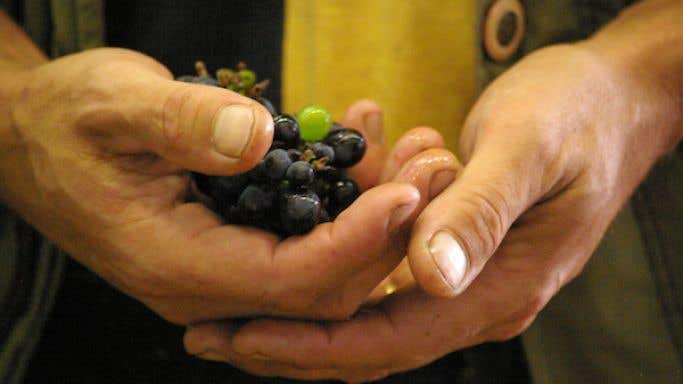As an Englishman good and true, I am exceptionally well practised at keeping my feelings firmly bottled up. Rarely if ever is the cork removed to sniff at the mysteries within. Not once has internal pressure exploded the glass, spilling its guts all over the floor.
No, all and any emotional reactions are safely tucked away – not only bottled up, but sealed in original wooden cases, stacked in a dusty cellar behind old cans of paint and firmly forgotten about.
Yet when I open a bottle of wine, it is in ultimate pursuit of exactly what has been suppressed: a deep, raw, emotional reaction – something charged with passion and spontaneity and animal instinct. And no type of wine promises such ecstasy more than Pinot Noir.
It’s very nickname betrays its potency: the heartbreak grape. Dozens of events are devoted to Pinot Noir across the globe each year, way more than for any other variety – as if it is somehow the neediest cause. But perhaps most tellingly, it is the grape which most commonly triggers vinous epiphanies among our congregation. Countless are the Damascene conversions it has inspired, when the penny finally drops and new, lifelong obsessions are born of a single, magical bottle: the Pinot of no return.
Jancis’s own moment with a 1959 Les Amoureuses Chambolle-Musigny has been well documented. When I asked on Twitter who had had similar epiphanies, responses were immediate: Louis Latour 1985 Corton Grancey, Denis Mortet 2005 Chambertin, Joseph Roty, Les Fontenys premier cru 2000 Gevrey-Chambertin, René Engel 2002 Échezeaux, as well as Ata Rangi, Yabby Lake and several others. If you’ve had one yourself, no doubt its name is on your lips even now.
As an aside, my own formative Pinot experience should also have been with a Les Amoureuses Chambolle-Musigny, funnily enough. While working for Majestic Wine in the mid 2000s, our store was mistakenly sent a single bottle of Domaine Comte de Vogüé’s legendary premier cru bottling instead of the lesser village blend. Rather than reporting the discrepancy, the store manager, not renowned for his scruples, decided to drink the bottle with the staff.
Once the shop doors were locked that evening, it was duly opened and poured. This was my first encounter with burgundy of mythical status, one whose price was measured in hundreds of pounds, a true pinnacle of Pinot. I swirled, sniffed, swallowed ... and felt nothing. All I could taste was hollow disappointment.
Perhaps this anti-climax is why I am so especially addicted to finding my own bottled epiphany. But why Pinot Noir? What is it about this particular grape that makes it the ultimate wine of enlightenment for so many of us?
One theory attributes Pinot Noir's appeal to the fact that it varies so dramatically according to terroir. No other grape displays such infinite variation, most overtly manifested in the patchwork quilt of Burgundy. Another significant factor is the fact that Pinot Noir thrives in just a handful of precious regions around the world. Even England, increasingly.
Furthermore, it tends to be the hardest grape for newcomers to appreciate. It doesn’t have the impressive power of Cabernet Sauvignon, the flattering lushness of Grenache or the rich fruitiness of Shiraz. Rather, it is often light, seemingly underpowered, with esoteric flavours that can evoke butchery and horticulture above orchards and floristry. Rightly or wrongly, the acquisition of that taste signifies a more sophisticated level of wine appreciation.
But the most compelling reason for Pinot Noir’s intangible appeal, for me at least, is that visceral emotional reaction it can trigger. And the fact that such an ultimate payoff is so elusive is all part of the draw.
Like an addict forever chasing the next high, part of the thrill is in the chase – though I hasten to add that I haven’t got to the stage of mainlining Pinot Noir into my bloodstream. Perhaps it's only a matter of time before Zalto start making hypodermic syringes, but in the meantime I can't help wondering if I’ve already had an epiphanic Pinot moment, but simply didn’t realise at the time. That really would put the Pinot into poignant.
Psychologists might argue that it's far healthier applying a corkscrew to those pesky bottled-up feelings than to yet another Pinot Noir. Alternatively, perhaps the emotional reactions that the greatest Pinots can inspire serve as a proxy for what might otherwise stay perpetually repressed. I have a feeling that might be the case.

